Quick Airline Information:
✈Airline IATA* code: CI
✈Airline ICAO* code: CAL ✈Founded: 07 September 1959 ✈Website: www.china-airlines.com✈Alliance: SkyTeam✈History
✈Operations and Destinations 🌍
✈Fleet ✈️
✈Photo Slide 📷✈Safety Video 🎬
✈Airline reviews ⭐
*IATA: (International Air Transport Association)
*ICAO: (International Civil Aviation Organization)
History Menu:
The early beginnings of China Airlines remotes to 1959, when it was founded on the 7 of September the same year. The airline started with a fleet of two PBY Amphibians, and started operations on 16 December 1959. It was controlled 100% by the Taiwan government, initially concentrated on charter flights.

During the 1960s, China Airlines was able to establish its first scheduled routes. In October 1962, a flight from Taipei to Hualien became the airline's first domestic service. Later, with the introduction of Caravelle and Boeing 727-100s, the airlines introduced international flights to South Vietnam, Hong Kong, and Japan.
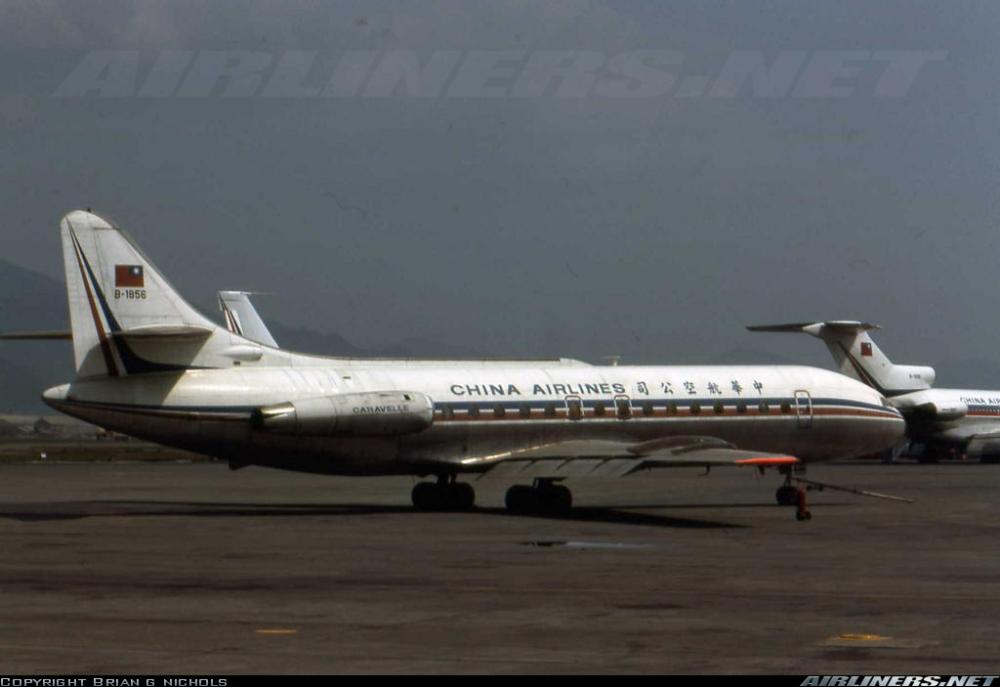

With the airlines' first two Boeing 707 aircraft, trans-Pacific flights to San Francisco via Tokyo were initiated on 2 February 1970. The expansion of the company's 707 fleet also permitted more services in Southeast Asia, Northeast Asia, and North America (via Japan and Hawaii).
Following the standard utilization of the wide-body 747 on the highly profitable Trans Pacific – USA routes, China Airlines introduced its first two 747-100s in 1976 and immediately placed them on its Hong Kong-Taipei-Tokyo-Honolulu-Los Angeles route. Shortly thereafter, four brand new Boeing 747SPs were introduced in 1977. Due to political pressure, Japan ended its diplomatic ties with Taiwan in 1972, and all flights between Taiwan and Japan were stopped. The 747SP aircraft made it possible for China Airlines to fly daily nonstop services from Taipei to its North American destinations without stopping over in Japan. It also allowed the airlines to introduce flights to Saudi Arabia and South Africa. During 1976, the Boeing 737-200 also joined the fleet.
In 1979, the airlines switched all operations from the smaller Taipei Songshan Airport to the newly built Chiang Kai-shek International Airport (now Taoyuan International Airport). Following the introduction of 747-200s, the airlines introduced its first European destination, Amsterdam.

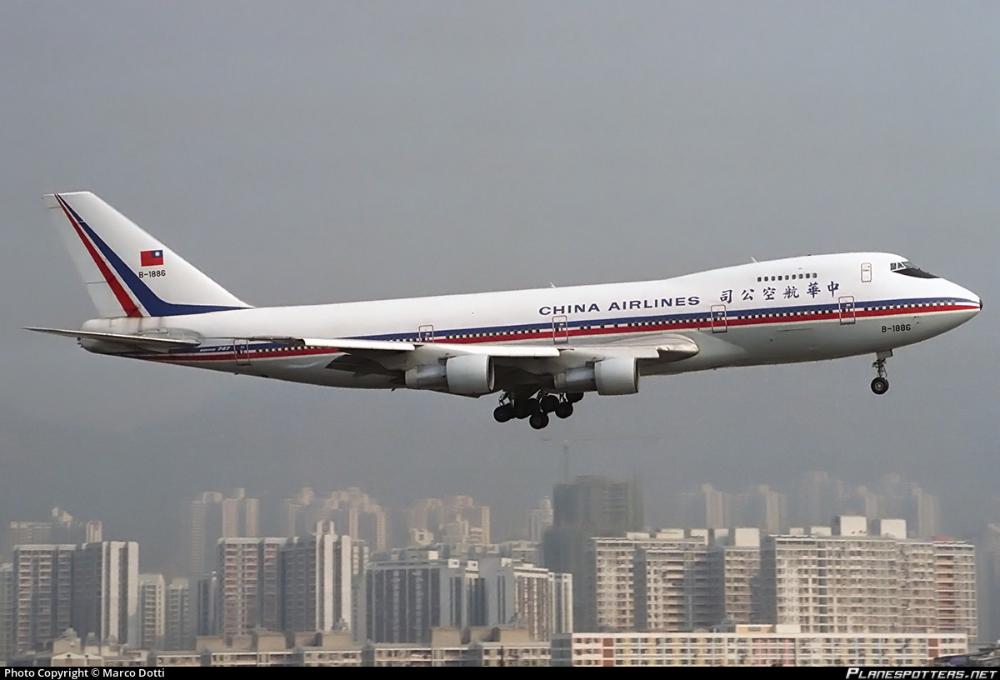
In 1978, Japan allowed China Airlines to return to Tokyo at Haneda after relocating all other airlines at the New Tokyo International Airport at Narita, leaving China Airlines as the sole international operator at Haneda. As well, the crossing of flag carriers (Taiwan based-airlines and Mainland China PRC based-airlines) occurred almost hourly at then British-controlled Hong Kong's Kai Tak International Airport. Adversely.
The next 20 years saw sporadic but far-reaching growth for the company. Later, the airline inaugurated its own round-the-world flight: (Taipei-Anchorage-New York-Amsterdam-Dubai-Taipei). In 1985 it took delivery of the first of Airbus aircraft, the A300, which it went on to operate 20 examples during the 1980's till 2008. As well, in 1992 China Airlines took delivery of the first McDonnell Douglas MD-11 which it operated for 10 years, used on the airlines long haul routes.
In 1993 saw China Airlines listed on the Taiwan Stock Exchange. Later CAL would place one of the largest orders for the newest Boeing 747. The new 747-400s and an earlier order with Airbus for over a dozen A300B4 wide body regional jets allowed for addition destination growth.
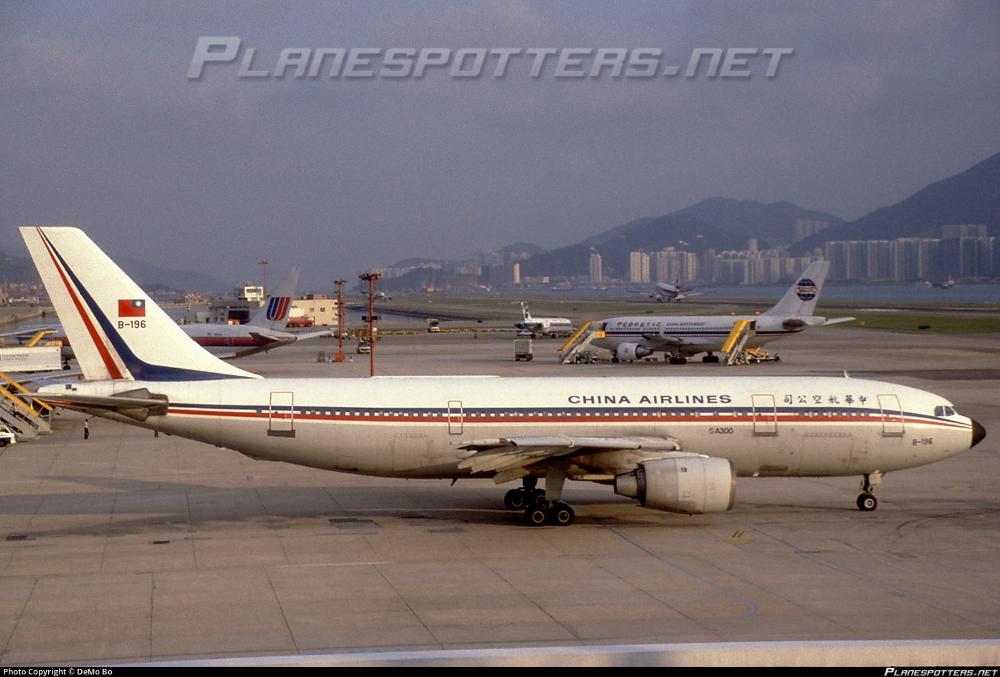
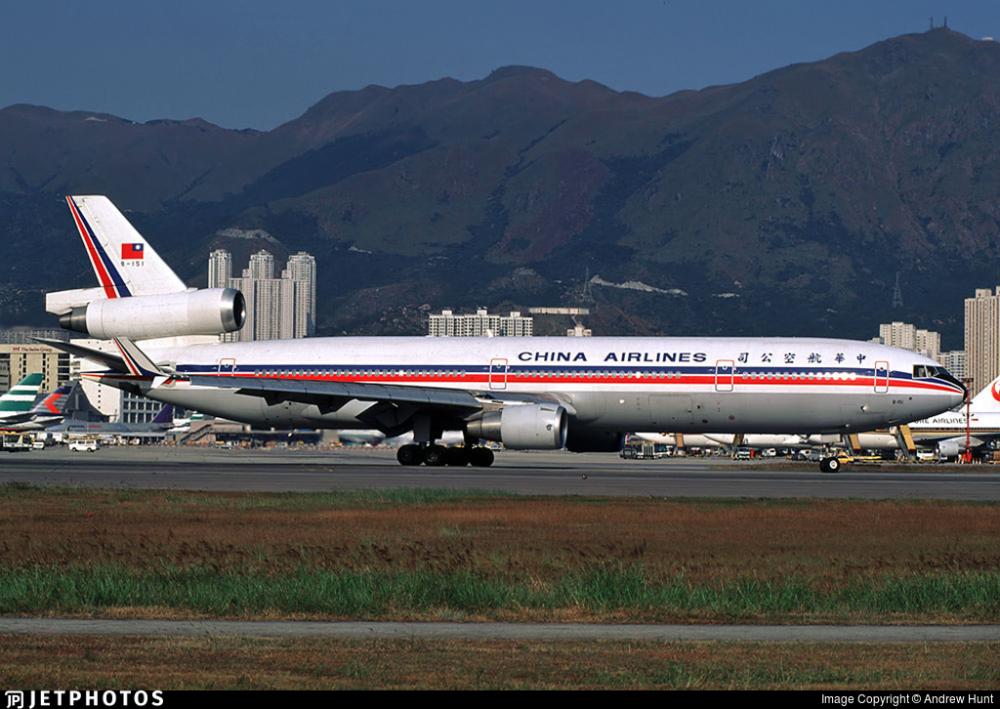
As Republic of China (Taiwan)'s flag carrier, China Airlines was been affected by disputes over the political status of the island of Taiwan was barred from flying into a number of countries maintaining diplomatic relations with the People's Republic of China ("China"). As a result, in the mid-1990s, China Airlines subsidiary Mandarin Airlines took over some of its Sydney and Vancouver international routes.
In 1995 China Airlines unveiled its "plum blossom" logo, replacing the national flag, which had previously appeared on the tail fins , and the aircraft livery from the red-white-blue national colors. The plum blossom is Taiwan's National Flower.
Throughout the 1990s, the airline employed many ex-ROC Air Force pilots. Due to the company's poor safety record in the 1990s, China Airlines began to change its pilot recruitment practices and the company began to actively recruit civilian-trained pilots with proven track records. In addition, the company began recruiting university graduates as trainees in its own pilot training program. The company also modified its maintenance and operational procedures. These decisions were instrumental in the company's improved safety record, culminating in the company's recognition by the IATA Operational Safety Audit.
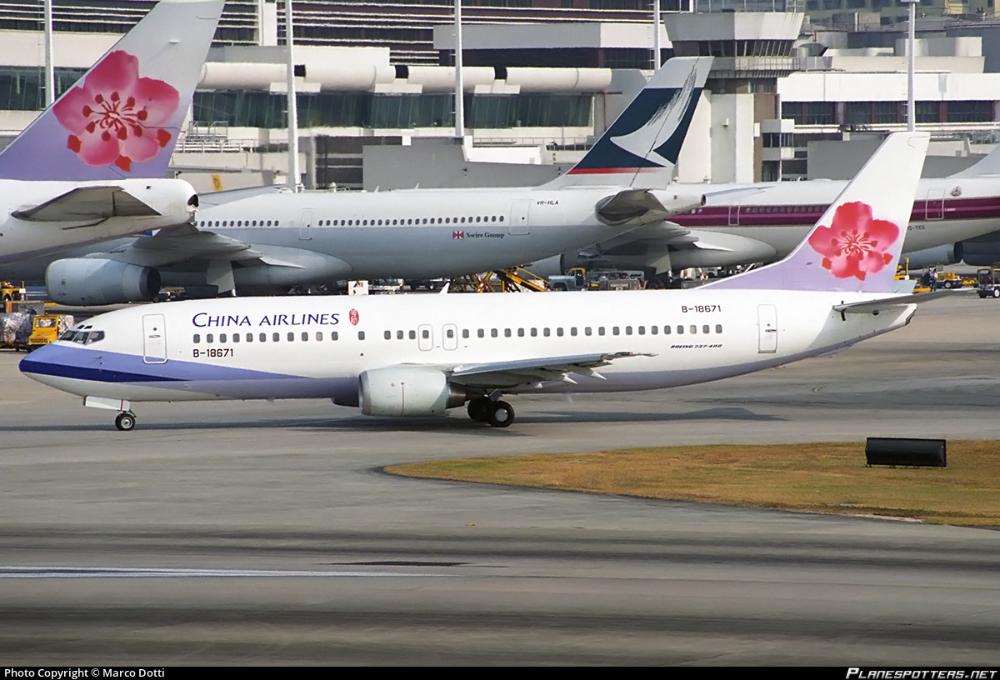
During the 1990s and early 2000s, China Airlines placed orders for various airliners including the Airbus A330, Airbus A340, Boeing 737-800, and the Boeing 747-400 (Both the passenger and freighter version).
Due to improving cross-strait relations, the first flights between Taiwan and China were introduced in 2003, with China Airlines' flight 585, operated by a Boeing 747–400, being the first Taiwanese flight to legally land in China. In 2008, the first regular weekend charter flights between Taiwan and China started operating, with daily charter flights introduced later in the year. In 2009, regularly scheduled cross-strait flights were finally introduced.
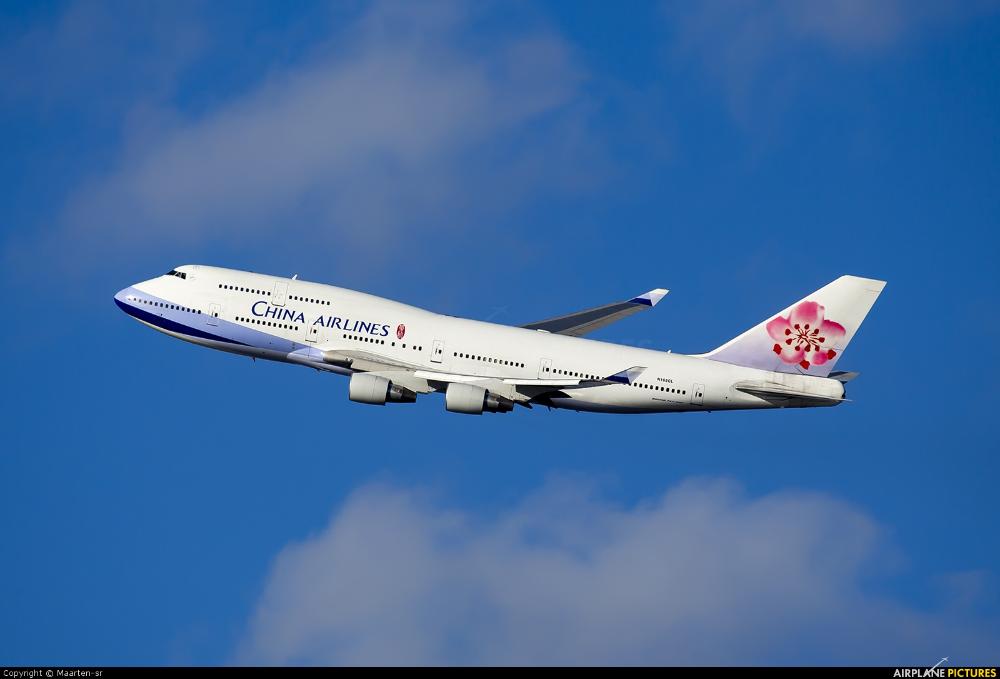
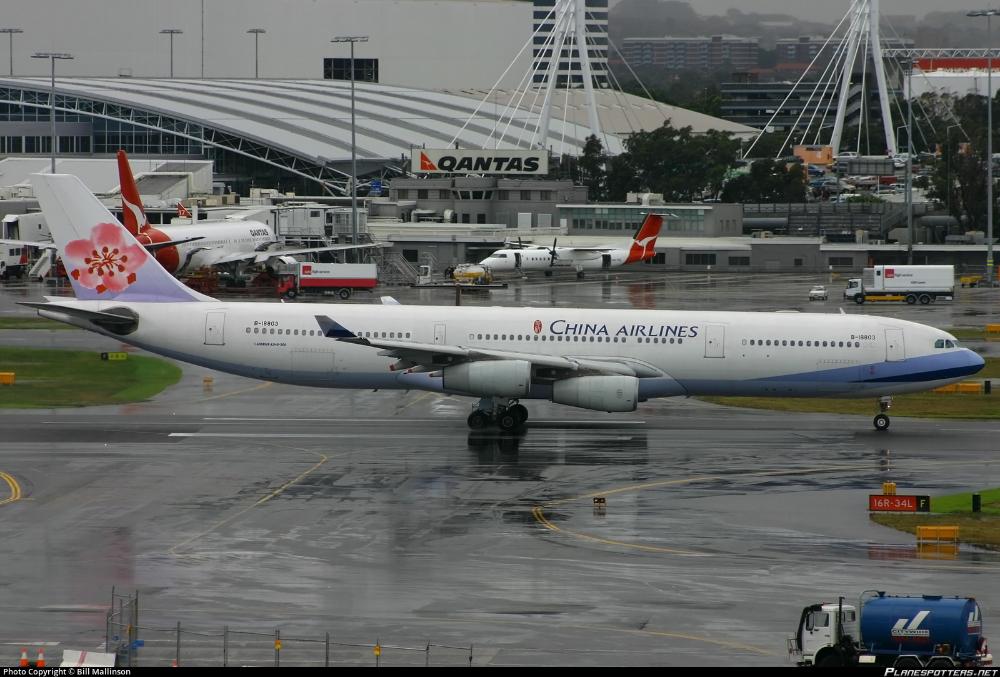
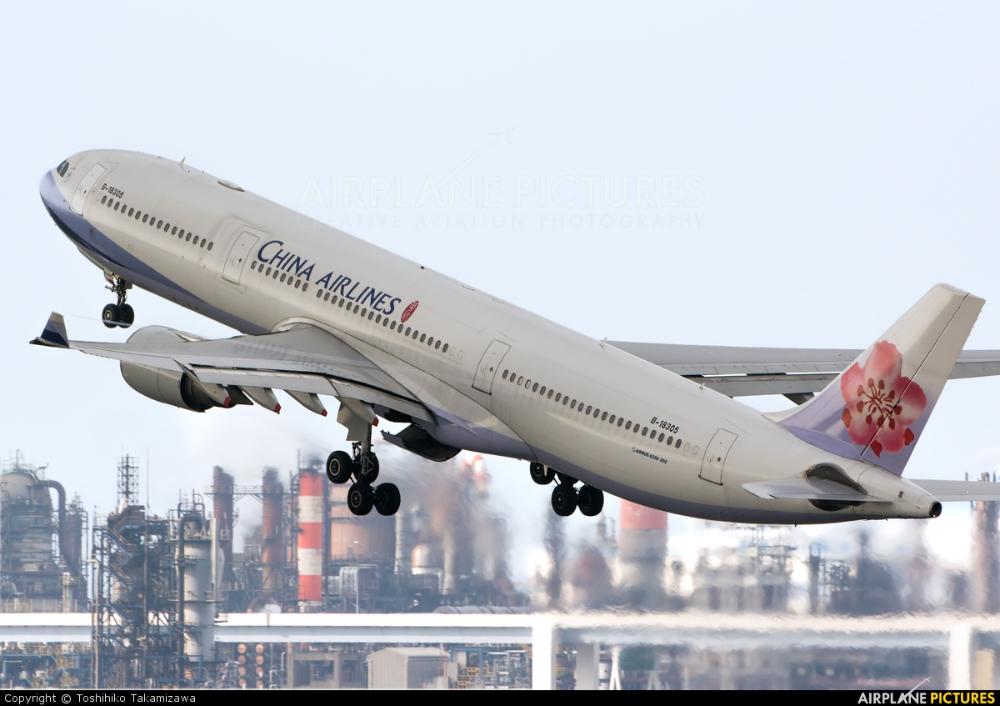
China Airlines signed an agreement to begin the process of joining the SkyTeam airline alliance on 14 September 2010 and officially became a full member on 28 September 2011. This was marked by an update to the logo of the airline and the typeface in which "China Airlines" is printed. The carrier was the first Taiwanese airline to join an airline alliance.
In December 2013, China Airlines announced its new joint venture with Singaporean low-cost carrier to establish Tigerair Taiwan. The new airline flew its inaugural flight to Singapore on 26 September 2014 and became the first, and currently only, Taiwanese low-cost carrier.
In March 2014, China Airlines took delivery of its first Boeing 777-300ER. At this time it also embarked into a strategic plan to expand and improve its services and image. The plan, designed to refresh the brand image of the carrier, included product innovations, new uniforms, and fleet replacements. Focus has also been put on tapping the maintenance, repair and overhaul (MRO) market. In January 2015, China Airlines established Taiwan Aircraft Maintenance & Engineering Co. (TAMECO).
Over the period between 2011 and 2015, China Airlines focused on strengthening its regional network; starting 2015 until 2020, the carrier is strengthening and expanding its European, North American and Oceanian network with the new long-haul fleet. After upgrading all its European routes to nonstop services, in late 2017, the carrier launched four weekly services to London Gatwick Airport. Regarding its regional network, China Airlines is actively adding frequencies to Southeast Asia. On the other hand, Mainland routes were being downsized due to tense cross-strait relations.
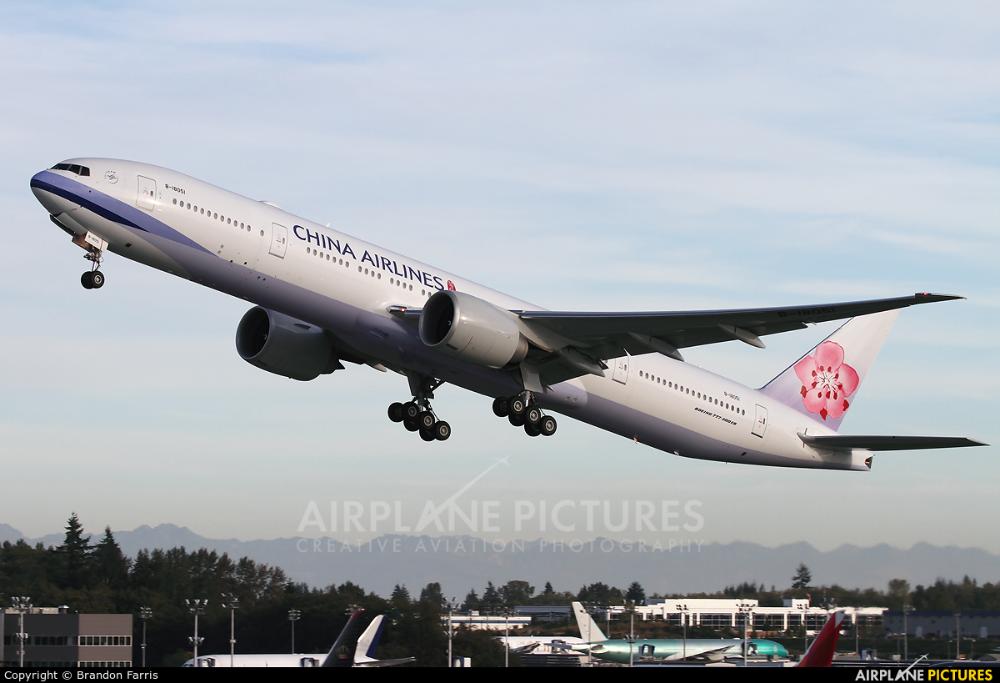
In September 2016, the airline received its first Airbus A350-900XWB. In June 2017, the final Airbus A340-300 of the carrier was sent to Victorville for retirement. Future phases of the plan includes the retirement of the Boeing 747-400, announcement of new narrow-body and regional wide-body orders. Additionally, following the retirement of 747s from long-haul routes, China Airlines terminated First Class services.
In America, daily flights were launched between Taipei and Ontario International Airport in Greater Los Angeles in March 2018. Additionally, the carrier has expressed interests in launching European destinations such as Barcelona, Madrid, Milan, and Prague; in North America, Atlanta, Boston, Chicago, Seattle, Toronto, and Wilmington.
History source: Wikipedia.org
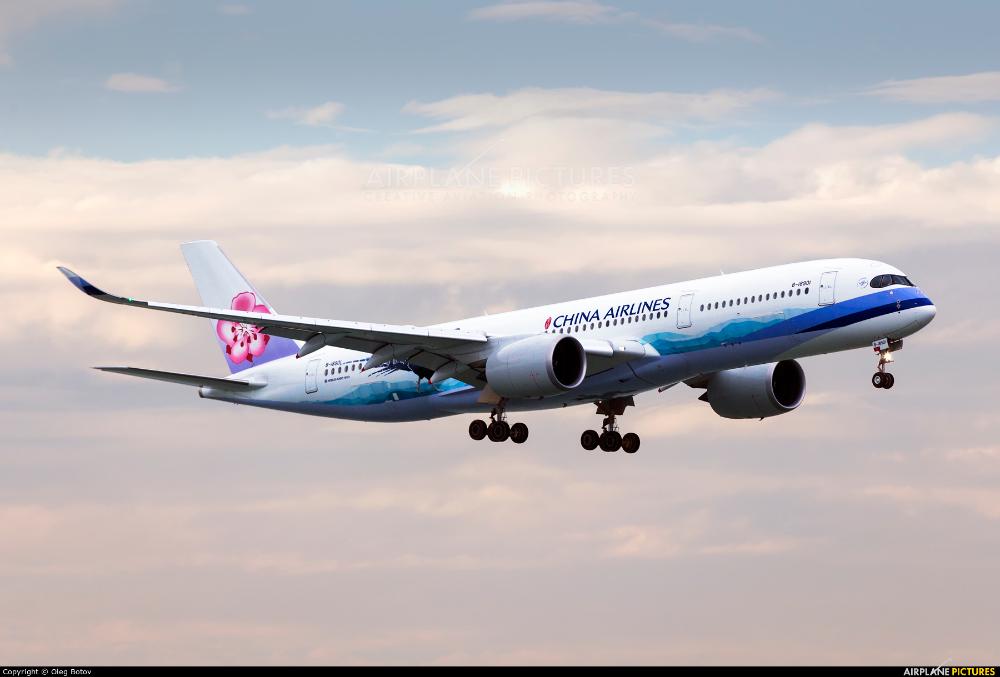
Operations and Destinations 🌍:
China Airlines operates to 118 airports in 115 cities on four continents. Japan is the most important market of the carrier, with over 180 flights weekly from multiple points in Taiwan to 14 Japanese destinations. China Airlines has its largest hub at Taiwan Taoyuan International Airport, where it operates to Europe, India, Korea, Hong Kong and Southeast Asia, China, Japan, North America and Oceania. China Airlines is the owner as well of its domestic subsidiary Mandarin Airlines operating numerous flights out of Kaohsiung International Airport and Taipei Songshan Airport, the downtown airport of Taipei.
China Airlines flies to the following destinations*:
| Region 🗺️ | Destinations 🌍🌎🌏 |
|---|---|
| ✈Taiwan (domestic) | Kaohsiung, Taichung, Tainan, Taipei Taoyuan, Taipei Songshan |
| ✈China | Beijing, Changchun, Changsha, Changzhou, Chengdu, Chongqing, Dalian, Fuzhou, Guangzhou, Haikou, Hangzhou, Hefei, Nanchang, Nanjing, Ningbo, Qingdao, Sanya, Shanghai, Shanghai, Shenyang, Shenzhen, Urumqi, Weihai, Wenzhou, Wuhan, Wuxi, Xiamen, Xi'an, Xuzhou, Yancheng, Yangzhou, Yantai, Zhengzhou |
| ✈Asia (except China) | Bangkok, Busan, Delhi, Denpasar, Fukuoka, Hanoi, Hiroshima, Ho Chi Minh City, Jakarta, Kagoshima, Kuala Lumpur, Laoag, Manila, Miyazaki, Nagoya, Okinawa, Osaka, Penang, Phnom Penh, Sapporo, Seoul, Shizuoka, Singapore, Surabaya, Takamatsu, Tokyo (NRT and HND), Toyama, Yangon |
| ✈Oceania | Auckland, Brisbane, Guam, Koror, Melbourne, Sydney |
| ✈North America | Calgary, Honolulu, Los Angeles, New York City, Ontario, San Francisco, Vancouver |
| ✈Europe | Amsterdam, Frankfurt, London, Rome, Vienna |
*Destination list is for reference only. Please check directly with the airline for updates.
*Note some destinations are only seasonal.*Correct info as of January 2020.
Fleet ✈️:
China Airlines has a dual fleet policy operating Airbus and Boeing aircraft to a number of destinations around the world. It's less density routes are operated by Boeing 737-800 with a replacement version to be announced soon. Also to note, it has a strong fleet of Boeing jumbo 747-400, operating both passenger and cargo flights.
The fleet* consists of the following aircraft:
| Network 🌐 | Aircraft ✈️ |
|---|---|
| ✈ Short and Medium haul | Airbus A330, Boeing 737-800, 777-300ER |
| ✈ Long haul | Airbus A350-900. Boeing 777-300ER, 747-400 |
*Correct fleet info as of January 2020.
China Airlines Photo Slide 📷:
China Airlines Safety Video (B777-300ER) 🎬:
Reviews ⭐:
 |  |
|---|---|
| ✅Member of the SkyTeam Alliance, for mileage redemption. | 👎 Limited routes to Europe and America. |
| ✅Modern fleet and new aircraft arriving like the Airbus A350-900. | |
| ✅Good service and quality on board. | |
| ✅ Number of destinations in Asia | |
| ✅Easy transits at Taipei Taoyuan International Airport. |








.png)